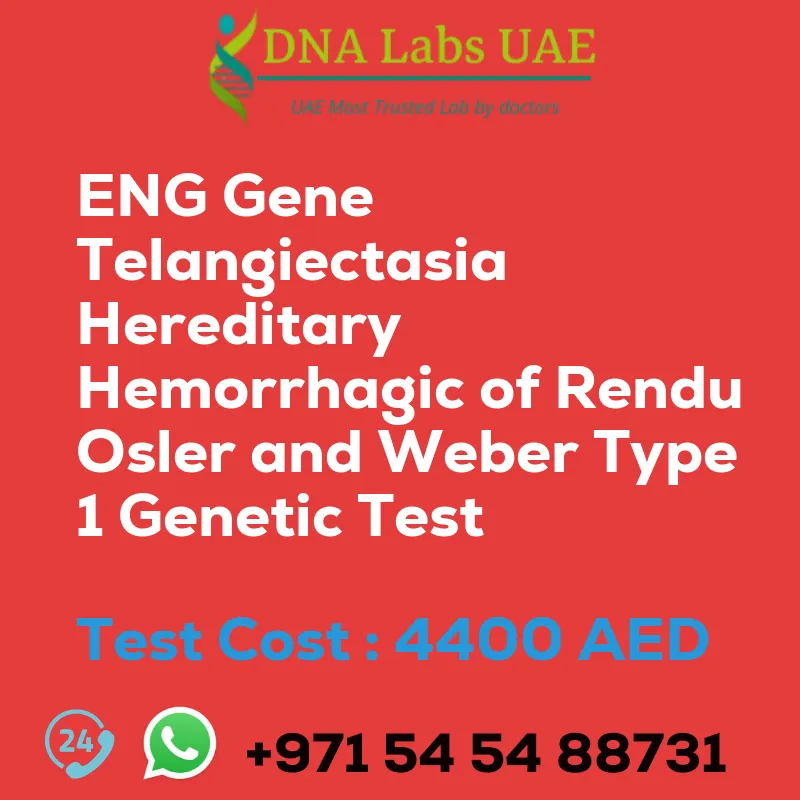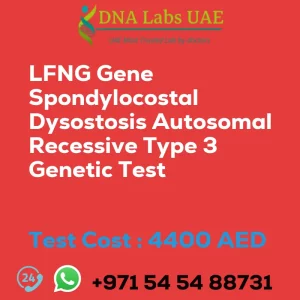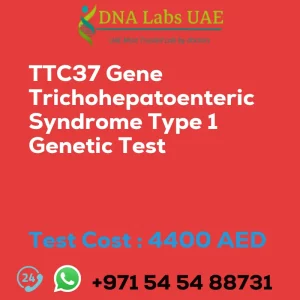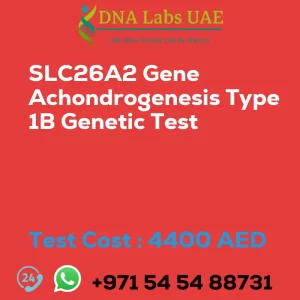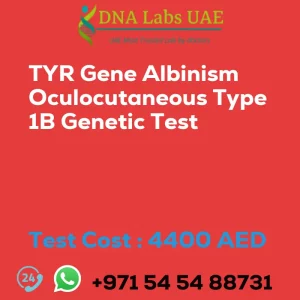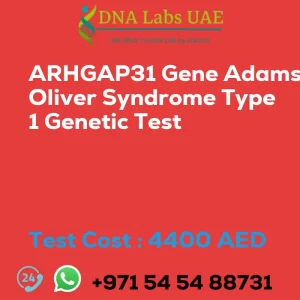ENG Gene Telangiectasia hereditary hemorrhagic of Rendu Osler and Weber type 1 Genetic Test
Components
Price: 4400.0 AED
Sample Condition: Blood or Extracted DNA or One drop Blood on FTA Card
Report Delivery: 3 to 4 Weeks
Method: NGS Technology
Test type: Osteology Dermatology Immunology Disorders
Doctor: Dermatologist
Test Department: Genetics
Pre Test Information
Clinical History of Patient who is going for ENG Gene Telangiectasia, hereditary hemorrhagic, of Rendu, Osler and Weber type 1 NGS Genetic DNA Test. A Genetic Counselling session to draw a pedigree chart of family members affected with ENG Gene Telangiectasia, hereditary hemorrhagic, of Rendu, Osler and Weber type 1 NGS Genetic DNA Test gene ENG
Test Details
Gene Telangiectasia, hereditary hemorrhagic, of Rendu, Osler and Weber type 1 (HHT1) is a genetic disorder characterized by the development of abnormal blood vessels, called telangiectasias, in various parts of the body. These blood vessels are prone to bleeding and can lead to symptoms such as recurrent nosebleeds, gastrointestinal bleeding, and arteriovenous malformations (AVMs) in organs like the lungs, liver, and brain.
NGS (Next-Generation Sequencing) Genetic Testing is a type of genetic test that uses advanced sequencing technologies to analyze multiple genes simultaneously. In the case of HHT1, NGS genetic testing can be used to identify mutations in the Endoglin (ENG) gene, which is responsible for the development of this disorder. The ENG gene provides instructions for producing a protein called endoglin, which is involved in the formation of blood vessels. Mutations in the ENG gene disrupt the normal function of endoglin, leading to the development of abnormal blood vessels seen in HHT1.
NGS genetic testing for HHT1 involves obtaining a DNA sample, typically through a blood sample, from the individual suspected of having the disorder. The DNA is then sequenced using NGS technology to identify any mutations or variations in the ENG gene. If a disease-causing mutation is detected, it confirms the diagnosis of HHT1.
NGS genetic testing for HHT1 is beneficial as it allows for the simultaneous analysis of multiple genes associated with the disorder, providing a more comprehensive evaluation of the genetic basis of the condition. It can also help identify individuals at risk of developing HHT1, allowing for early detection and appropriate medical management.
It is important to note that NGS genetic testing for HHT1 should be performed and interpreted by a qualified geneticist or genetic counselor, as they can provide appropriate genetic counseling and guidance based on the test results.
| Test Name | ENG Gene Telangiectasia hereditary hemorrhagic of Rendu Osler and Weber type 1 Genetic Test |
|---|---|
| Components | |
| Price | 4400.0 AED |
| Sample Condition | Blood or Extracted DNA or One drop Blood on FTA Card |
| Report Delivery | 3 to 4 Weeks |
| Method | NGS Technology |
| Test type | Osteology Dermatology Immunology Disorders |
| Doctor | Dermatologist |
| Test Department: | Genetics |
| Pre Test Information | Clinical History of Patient who is going for ENG Gene Telangiectasia, hereditary hemorrhagic, of Rendu, Osler and Weber type 1 NGS Genetic DNA Test. A Genetic Counselling session to draw a pedigree chart of family members affected with ENG Gene Telangiectasia, hereditary hemorrhagic, of Rendu, Osler and Weber type 1 NGS Genetic DNA Test gene ENG |
| Test Details |
Gene Telangiectasia, hereditary hemorrhagic, of Rendu, Osler and Weber type 1 (HHT1) is a genetic disorder characterized by the development of abnormal blood vessels, called telangiectasias, in various parts of the body. These blood vessels are prone to bleeding and can lead to symptoms such as recurrent nosebleeds, gastrointestinal bleeding, and arteriovenous malformations (AVMs) in organs like the lungs, liver, and brain. NGS (Next-Generation Sequencing) Genetic Testing is a type of genetic test that uses advanced sequencing technologies to analyze multiple genes simultaneously. In the case of HHT1, NGS genetic testing can be used to identify mutations in the Endoglin (ENG) gene, which is responsible for the development of this disorder. The ENG gene provides instructions for producing a protein called endoglin, which is involved in the formation of blood vessels. Mutations in the ENG gene disrupt the normal function of endoglin, leading to the development of abnormal blood vessels seen in HHT1. NGS genetic testing for HHT1 involves obtaining a DNA sample, typically through a blood sample, from the individual suspected of having the disorder. The DNA is then sequenced using NGS technology to identify any mutations or variations in the ENG gene. If a disease-causing mutation is detected, it confirms the diagnosis of HHT1. NGS genetic testing for HHT1 is beneficial as it allows for the simultaneous analysis of multiple genes associated with the disorder, providing a more comprehensive evaluation of the genetic basis of the condition. It can also help identify individuals at risk of developing HHT1, allowing for early detection and appropriate medical management. It is important to note that NGS genetic testing for HHT1 should be performed and interpreted by a qualified geneticist or genetic counselor, as they can provide appropriate genetic counseling and guidance based on the test results. |

